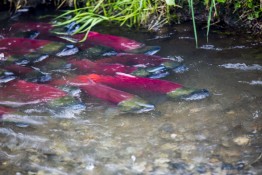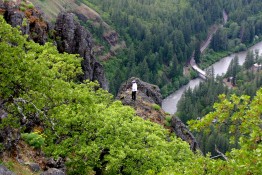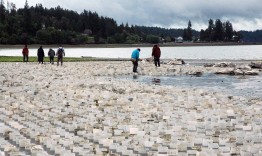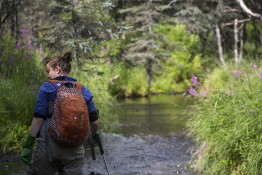Ray Hilborn watched with satisfaction last summer as the near-record sockeye salmon run he and his UW colleagues had forecasted finally flooded from Bristol Bay up through the lakes and creeks of southwest Alaska. Their prediction? Forty-nine million sockeye—up more than 50 percent from the average of 32 million. When the season started slowly Hilborn got antsy, recalling the 1995 run, in which “there was nothing, nothing, nothing and people started to despair,” says the aquatic and fishery sciences professor.
Read more in Columns »Seattle's Ballard is ripe for green-space restoration, new report says
When you look at a map of Ballard, something surprising might jump out — there are very few public natural areas for residents to enjoy. The Seattle neighborhood has its fair share of single-family backyards and gardens, but for the increasing number of residents who live in apartments or condos in Ballard’s downtown core, there aren’t many public green areas. A University of Washington graduate student saw green-starved Ballard as an opportunity to call attention to areas in the neighborhood that have restoration potential.
Read more at UW Today »Award honors hundreds of citizen scientists who search for Washington’s rarest plants
Each year, hundreds of volunteers spread across Washington’s forests and grasslands to look for the state’s rarest, most sensitive plant species. Many of these endangered populations live in remote valleys or along unseen slopes and haven’t been seen in a decade or more. That’s where the University of Washington’s Rare Plant Care and Conservation program comes in. Its team of more than 200 volunteers fans out each summer to gather intel, one plant population at a time, on some 4,000 living in Washington state.
Read more at UW Today »Gear, not geoducks, impacts ecosystem if farming increases
The equipment used to farm geoducks, including PVC pipes and nets, might have a greater impact on the Puget Sound food web than the addition of the clams themselves. That’s one of the findings of the first major scientific study to examine the broad, long-term ecosystem effects of geoduck aquaculture in Puget Sound, published last week in the International Council for the Exploration of the Sea’s Journal of Marine Science.
Read more at UW Today »UW's Alaska Salmon Program: A Living Laboratory
Sarah Schooler spent her summer in the Alaskan bush, collecting data on salmon and the habits of hungry grizzly bears with the School of Aquatic and Fishery Sciences.
Read more at the UW homepage. »





